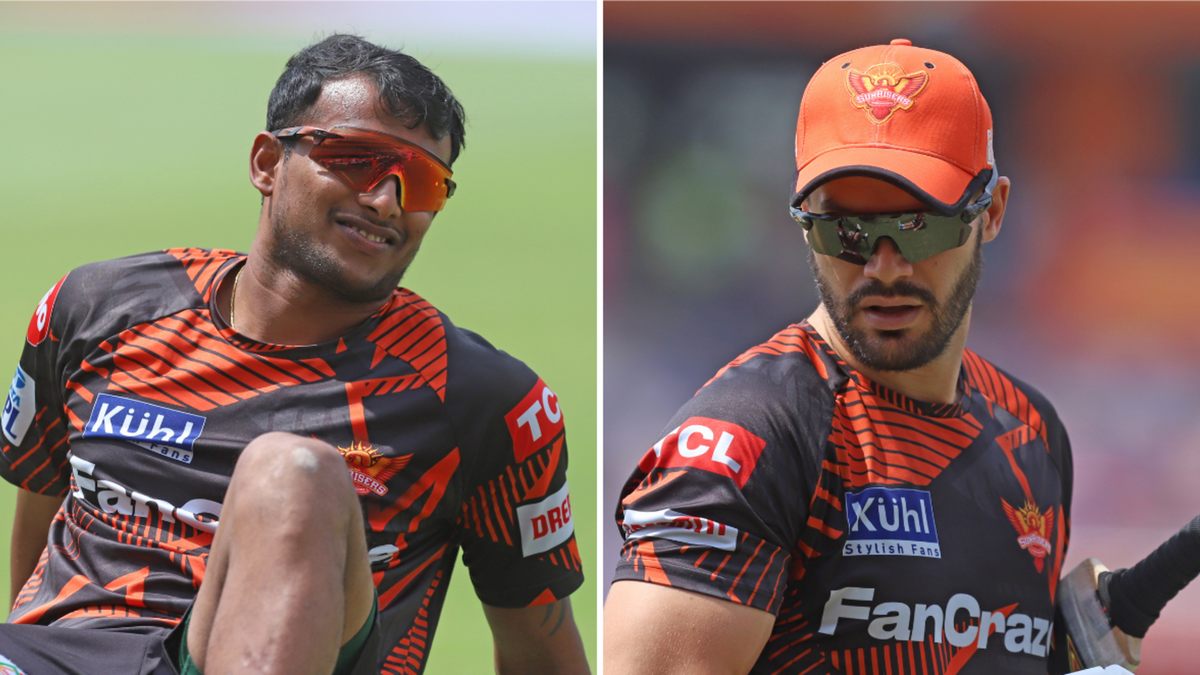
There was some puzzlement over the make-up of the Sunrisers Hyderabad XI picked to play Lucknow Super Giants today (May 13), with the team management seemingly eschewing the standard ‘impact player’ methodology in picking a bowler-heavy XI.
To bet on the IPL with our Match Centre partners bet365, head here.

The SRH team named to start the game consisted of the following: Anmolpreet Singh, Abhishek Sharma, Rahul Tripathi, Aiden Markram, Heinrich Klaasen, Glenn Phillips, Abdul Samad, Mayank Markande, Bhuvneshwar Kumar, Fazalhaq Farooqi and T Natarajan. It was the last of those names that caused particular confusion. He is one of the purest No.11s in the world game, with a first-class average of 2.07, and eight runs from 74 T20 appearances – if ever there were a player you could only pick for one half of the game, it would be him.
This has been the typical approach with impact players so far: If you bat first, pick an extra batter, and then sub out one of them – usually the oldest and least mobile – for the bowler least likely to make an impact with the bat. And if you bowl first, sub out the bowler least capable with the bat at the halfway stage.
Among their impact player list were Vivrant Sharma and Mayank Dagar, two all-rounders, and Simon Doull, on commentary, questioned whether a mistake had been made in naming Natarajan in the XI over Vivrant in particular.
However, there is a logic as to why SRH would go with the XI they named, with their choice allowing them flexibility at the expense of only a slight bit of batting depth. Vivrant and Mayank are both all-rounders, but they are of very different types. Vivrant is a top-order bat who bowls leg-spin, while Mayank a finisher and a slow left-armer. This way, they can delay their decision over which one to include, based on the conditions, the opposition team, and how the game unfolds.
Had a top-order wobble taken place, Vivrant could have been brought in to steady the ship. Or if they needed a few lusty blows late on, Mayank may have been the choice. And all else being equal, they could pinpoint any weaknesses in the LSG batting line-up and pick whoever would best exploit that.
What this did mean was that SRH didn’t have the option of going in with eight batters, including an all-rounder, to start with, and then bringing in another all-rounder in the case of a significant collapse. But with all of Natarajan, Bhuvneshwar, Markande and Farooqi in SRH’s best bowling attack for the game, and Brian Lara and Co. unsure over who best to round out the attack and the batting line-up, the XI picked made sense, even if at first it is hard to work out why.
However, the timing of the impact substitution was puzzling. When Klaasen fell in the 19th over, that left SRH six wickets down and with only the bowlers left. But instead of bringing in an all-round impact player at that point, they chose instead to send Bhuvneshwar into bat. The India quick is handy, but doesn’t quite qualify as an all-rounder. He faced one ball and hit it for two, though it was there to be sent to the boundary. If the game ends as a thriller, SRH may look back on the timing of the switch, if not the strategy itself.








